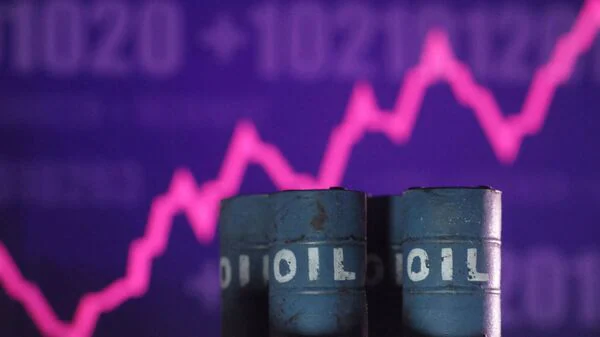According to sources quoted by ANI and many publications from August 2025, if India stopped buying Russian oil, global crude oil prices may skyrocket to almost $200 per barrel, which would have a significant effect on consumers everywhere.
This is because Russia is the second-largest producer of crude oil in the world, producing over 9.5 million barrels per day, or nearly 10% of the world’s total demand. It is also the second-largest exporter, exporting approximately 4.5 million barrels of crude and 2.3 million barrels of refined products daily.
India, the third-largest energy user in the world with an 85% reliance on imports, has made the decision to continue purchasing Russian crude oil in spite of strong pressure from the United States, including threats of tariffs and political remarks made by former President Donald Trump.
In accordance with international standards and frameworks, such as the G7/EU price cap system, which aims to restrict Russia’s oil income without directly punishing Russian oil, Indian refiners have made these acquisitions based on commercial and economic feasibility.
Brent crude prices had already risen to a peak of $137 per barrel in March 2022 due to earlier concerns about interruptions in the Russian oil supply. In addition to OPEC+ production cutbacks of around 5.86 million barrels per day, experts caution that eliminating Russian oil from the global market—especially if India stopped purchasing it—would worsen supply limitations and may drive crude prices well above the 2022 high, possibly reaching $200 per barrel. This would increase the cost of energy for households and businesses worldwide, leading to inflation.
Although Indian refiners have recently reduced their purchases of Russian oil—state-owned refiners stopped purchasing Russian crude in late July 2025 due to dwindling price breaks and the threat of US tariffs—sources clarify that, on the whole, Indian refiners have kept purchasing Russian crude that is thought to be commercially viable.
Reliance and other private Indian refiners are still buying Russian oil. Indian oil marketing firms have likewise cooperated with the $60 per barrel price ceiling set by the US and have refrained from buying US-sanctioned Venezuelan or Iranian oil.
China and Europe continue to be key consumers of Russian energy, with the EU purchasing most of Russia’s pipeline gas and LNG exports. These imports are still occurring even though the EU set a lower price restriction on Russian oil ($47.6 per barrel beginning in September 2025). In the meantime, India continues to exercise its freedom to make energy decisions based on economic logic and national interest, supporting global energy stability by maintaining price stability and market equilibrium in a difficult geopolitical environment.
One important element in keeping the world’s oil markets stable is India’s ongoing purchases of Russian oil. Due to the enormous supply imbalance that would result from an abrupt halt in India’s purchases, crude oil prices might spike to previously unheard-of levels close to $200 per barrel, with dire repercussions for the world economy and high inflationary pressures. Despite continuous geopolitical difficulties, India is nevertheless dedicated to striking a balance between its demands for energy security, international compliance, and market realities.
This comprehensive summary, which reflects the current geopolitical and energy market trends, synthesizes several reliable sources from August 2025.


